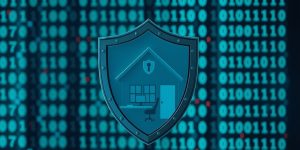As an e-commerce business owner, safeguarding your online business is essential to protect customer information and maintain a secure digital environment. This article explores key strategies for website protection and cybersecurity practices specifically tailored for small and medium-sized e-commerce enterprises.
Key Takeaways
- Implement a solid cybersecurity framework tailored to the unique challenges of e-commerce businesses.
- Safeguard customer information to maintain business reputation and comply with regulations.
- Conduct regular risk assessments and planning to mitigate potential threats and vulnerabilities.
- Invest in insurance for online businesses to protect against financial losses from cyber incidents.
- Utilize digital tools for business security to enhance protection and fraud detection.
Understanding Cybersecurity for E-commerce
Unique Challenges for E-commerce Businesses
E-commerce businesses, while enjoying the benefits of a vast digital marketplace, face distinct cybersecurity challenges. Unlike traditional brick-and-mortar stores, online businesses must navigate a complex web of digital threats that can compromise sensitive data and disrupt operations. Cybersecurity is paramount for these businesses, as they operate in an environment where threats evolve rapidly and the consequences of breaches can be severe.
To address these challenges, it is essential for e-commerce businesses to implement robust security measures. These include, but are not limited to, the following actions:
- Implement two-factor authentication
- Keep software up to date
- Regularly update plugins and themes
These steps are critical in enhancing website security and protecting against the myriad of cyber threats targeting online commerce.
The e-commerce industry’s rapid growth, with sales expected to surpass $1 trillion, underscores the urgency for SMEs to adopt comprehensive cybersecurity strategies. Proactive measures are not just recommended; they are a necessity in safeguarding the digital storefronts that consumers increasingly rely upon.
Cybersecurity Framework for Small E-commerce Sites
For small e-commerce businesses, establishing a robust cybersecurity framework is not just a technical necessity but a critical business imperative. Every transaction is a marginal financial success that the business depends on, and any downtime due to cyberattacks can be detrimental. A comprehensive cybersecurity framework should encompass several key components to ensure the safety of operations and data.
- Scan website for malware using online scanners or security plugins.
- Regularly backup your website to ensure data safety and security.
- Enable Multi-Factor Authentication (MFA) to add an extra layer of security.
- Invest in a password manager to maintain unique and complex login details.
- Ensure compliance with Payment Card Industry (PCI) Data Security Standards for transaction processing.
It is essential for small e-commerce sites to adopt cybersecurity practices and tools that are tailored to their specific needs and challenges. Without these, the risk of data breaches and financial losses increases significantly.
By adhering to these practices, small e-commerce sites can create a solid foundation to protect against the evolving threats in the digital landscape. It is not only about protecting the business but also about maintaining customer trust and complying with industry regulations.
E-commerce Fraud Detection and Prevention
With the e-commerce fraud detection and prevention market projected to exceed 100 billion dollars by 2027, it’s clear that this area is becoming increasingly critical for online businesses. Nearly 90% of merchants recognize fraud management as a vital component of their strategy, reflecting the high stakes involved in protecting both the business and its customers.
To effectively combat fraud, businesses must employ a variety of strategies. Machine learning and artificial intelligence are at the forefront, providing the ability to discern patterns and anomalies in large datasets. These technologies enable the detection of suspicious activities, such as mismatching IP addresses, billing details, and shipping addresses, or unrealistic purchase behaviors.
It is imperative to regularly scan your website for malware, use secure file upload measures, and validate file types and sizes. These actions are foundational in maintaining the integrity of your e-commerce platform and safeguarding consumer safety.
Additionally, training customer service representatives (CSRs) to recognize and respond to fraud indicators is crucial. They should be adept at verifying contact details and interpreting risk alerts to manually review high-risk transactions. This human element complements the automated systems, ensuring a robust defense against fraudulent activities.
Data Protection and Risk Management
Safeguarding Customer Information
In the digital marketplace, the security of customer information is paramount. Businesses must invest in secure online environments for transactions and the storage of personal customer data. This not only protects customers but also shields the business from potential financial and reputational damage. Cybersecurity risks impact businesses financially and reputationally, making recovery and continuity measures critical.
To ensure the integrity of customer data, adherence to the Payment Card Industry (PCI) Data Security Standards is essential. These standards provide a framework for handling sensitive card details, including:
- Encrypting payment information at checkout
- Implementing strong password policies
- Conducting regular security assessments
- Enabling fraud prevention tools like address verification and CVV checks
It is vital to educate employees on cybersecurity best practices and the importance of data protection. Regular updates and training can significantly reduce the risk of data breaches.
Furthermore, businesses should consider data masking or anonymization to minimize the risk of personal information exposure. Continuous monitoring of activities and implementing data leakage protection are also key steps in safeguarding customer information.
Risk Assessment and Planning
Risk assessment and planning are critical components of a robust cybersecurity strategy for SMEs. The process begins with identifying all third parties, including subcontractors and those further down the supply chain. A risk profile is then created for each entity, categorizing them based on their level of risk: typically low, medium, or high.
Developing a risk management framework is essential, tailored to the third party’s level of risk. This framework should encompass important controls and plans for risk mitigation. Clearly defining roles and responsibilities ensures that all parties are aware of who should take action and when.
In the event of a security breach, having a pre-defined plan based on the severity of a potential breach is crucial. A high-risk third-party partner, for example, would necessitate a more comprehensive response plan than a low-risk partner.
Continuous monitoring is imperative to stay ahead of evolving third-party activities and the associated risks. It is also important to curate effective and fast Director decisions when incidents occur. Lastly, the implementation of Multi-Factor Authentication (MFA) and biometric authentication can add extra layers of security, significantly reducing the risk of unauthorized access and credential theft.
Insurance for Online Businesses
In the digital age, insurance is a critical component of risk management for online businesses. It acts as a safety net, providing financial protection against a range of cyber threats that can lead to significant losses.
Cyber insurance policies are tailored to address the specific risks associated with e-commerce, such as data breaches, hacking incidents, and even the operational disruptions caused by cyberattacks. These policies often cover the costs associated with recovery efforts, legal fees, and customer notification expenses.
- First-party coverage includes direct losses to the business, such as theft of digital assets.
- Third-party coverage protects against claims made by customers or partners affected by a cybersecurity incident involving the insured business.
It is essential for SMEs to evaluate their exposure to cyber risks and choose an insurance plan that aligns with their operational needs and budget constraints.
Selecting the right insurance provider and policy requires careful consideration of the coverage options, exclusions, and the insurer’s track record in handling claims. Businesses should also be aware of the evolving nature of cyber threats and ensure their policies are updated accordingly.
Digital Maturity and Security Practices
Creating a Solid Cybersecurity Framework
To establish a robust cybersecurity framework, SMEs must first assess the current state of their security measures. This involves a thorough examination of the existing security framework, providing clear insight into areas requiring fortification. By pre-emptively addressing these vulnerabilities, you mitigate the risk of a successful cyber-attack.
However, it’s crucial to remember that cybersecurity is not a one-time initiative but a continuous process. As cyber criminals become more sophisticated, businesses need to constantly update and adapt their cybersecurity strategies to stay ahead. A proactive approach, combined with the right resources and practices, is key to fending off evolving cyber threats.
Ransomware threats have led to increased ransom demands, with small businesses facing $40,719 in forensics costs and larger enterprises incurring $207,875. Organizations need to invest in robust security measures to prevent and mitigate breaches, including multi-factor authentication, network security, and employee training.
Adopting best practice standards and guidelines like the NIST Cyber Security Framework, ISO 270001, or Essential Eight is imperative. These frameworks provide a structured approach to managing cybersecurity risks and improving overall resilience. Furthermore, the human element cannot be overlooked. Ensuring that employees are aware of cyber threats and tactics is essential for a proactive defense against potential attacks.
Importance of Cybersecurity for SMEs
The significance of cybersecurity for small and medium-sized enterprises (SMEs) cannot be overstated. Cyberattacks can have devastating consequences, ranging from financial loss to reputational damage. SMEs, in particular, are often seen as low-hanging fruit by cybercriminals due to their limited resources and security measures.
Business Website Backups are a critical component of a robust cybersecurity strategy. They ensure that in the event of data loss or a cyberattack, an SME can quickly restore its digital presence and minimize downtime. This is not just about risk mitigation; it’s about business continuity and resilience.
It is essential for SMEs to recognize the value of investing in cybersecurity. Proactive measures can significantly reduce the risk of cyber incidents and protect the company’s assets and customer trust.
To illustrate the importance of cybersecurity, consider the following points:
- Cybersecurity protects against data breaches and theft.
- It ensures compliance with legal and regulatory requirements.
- Cybersecurity measures build customer confidence in the business.
- A strong security posture can give an SME a competitive advantage.
By prioritizing cybersecurity, SMEs can safeguard their future and maintain a strong position in the digital marketplace.
Digital Tools for Business Security
In the digital age, the security of an online business is paramount. Biometric authentication enhances security, convenience, and non-transferability. This technology, alongside the use of HTTPS for secure data transfer, forms a critical part of a robust cybersecurity strategy.
To further strengthen website security, SMEs should consider the following digital tools:
- Multi-factor authentication (MFA) to verify user identities
- Antivirus software to protect against malware
- Firewalls to prevent unauthorized access
- Regular software updates to patch vulnerabilities
- Data encryption to secure sensitive information
It is essential for businesses to not only implement these tools but also to ensure that they are integrated into a comprehensive security framework. Regular training and awareness programs for employees are crucial in maintaining the effectiveness of these security measures.
Engaging in simulated attack scenarios, such as ‘panic room’ exercises, can also be invaluable. These simulations help identify and address vulnerabilities, thereby reinforcing the security infrastructure of the business.
Conclusion
In conclusion, safeguarding your online business is crucial for the success and reputation of your e-commerce venture. As an e-commerce business owner, it is imperative to prioritize cybersecurity and implement robust protection strategies to ensure the safety of customer data and transactions. The ever-evolving landscape of online threats necessitates a proactive approach to website protection, and SMEs must invest in the right tools and practices to mitigate risks. By addressing the unique challenges faced by e-commerce businesses and adopting a comprehensive cybersecurity framework, SMEs can build trust, safeguard their reputation, and thrive in the digital marketplace.







